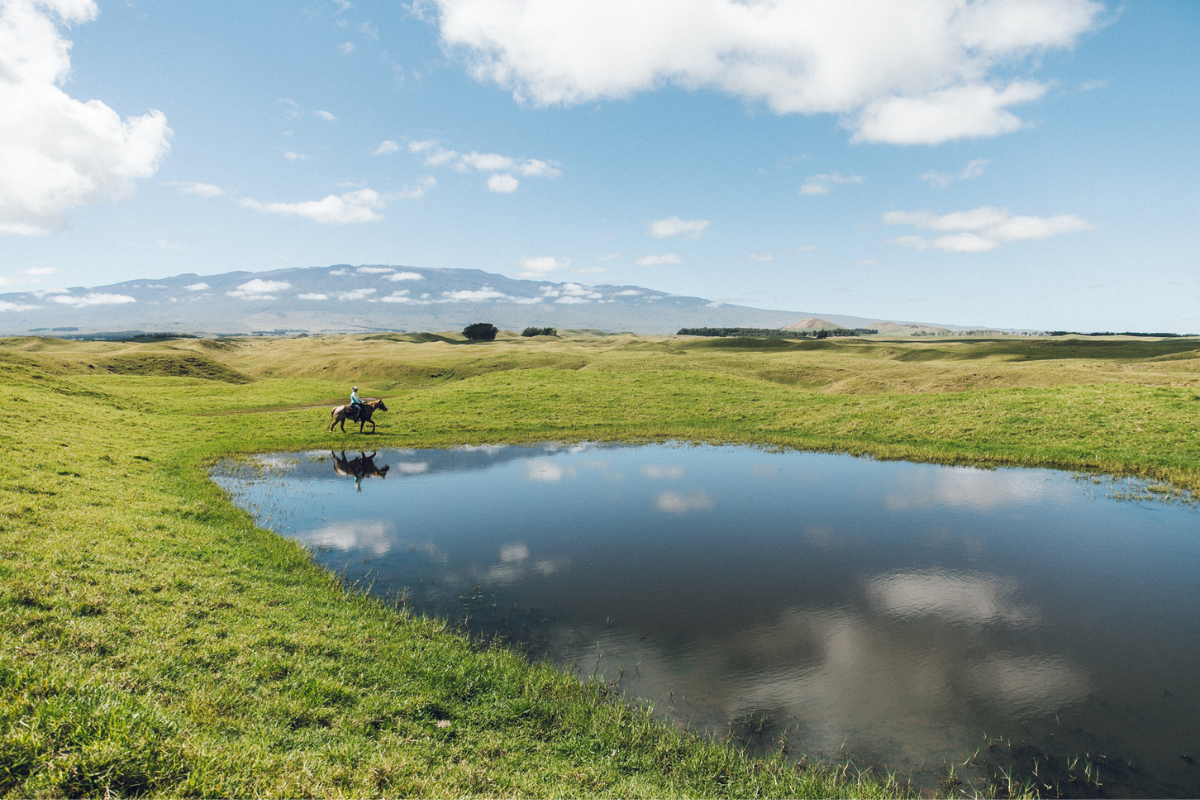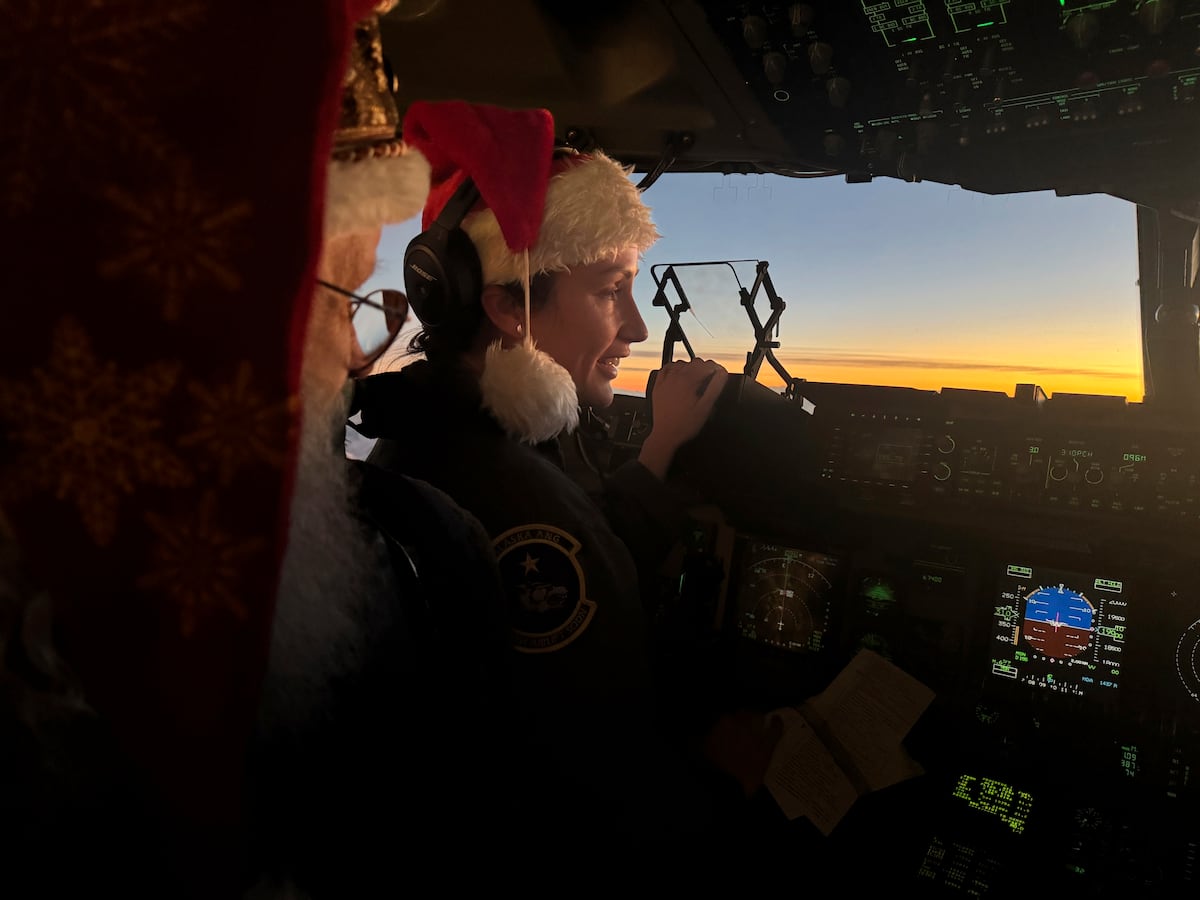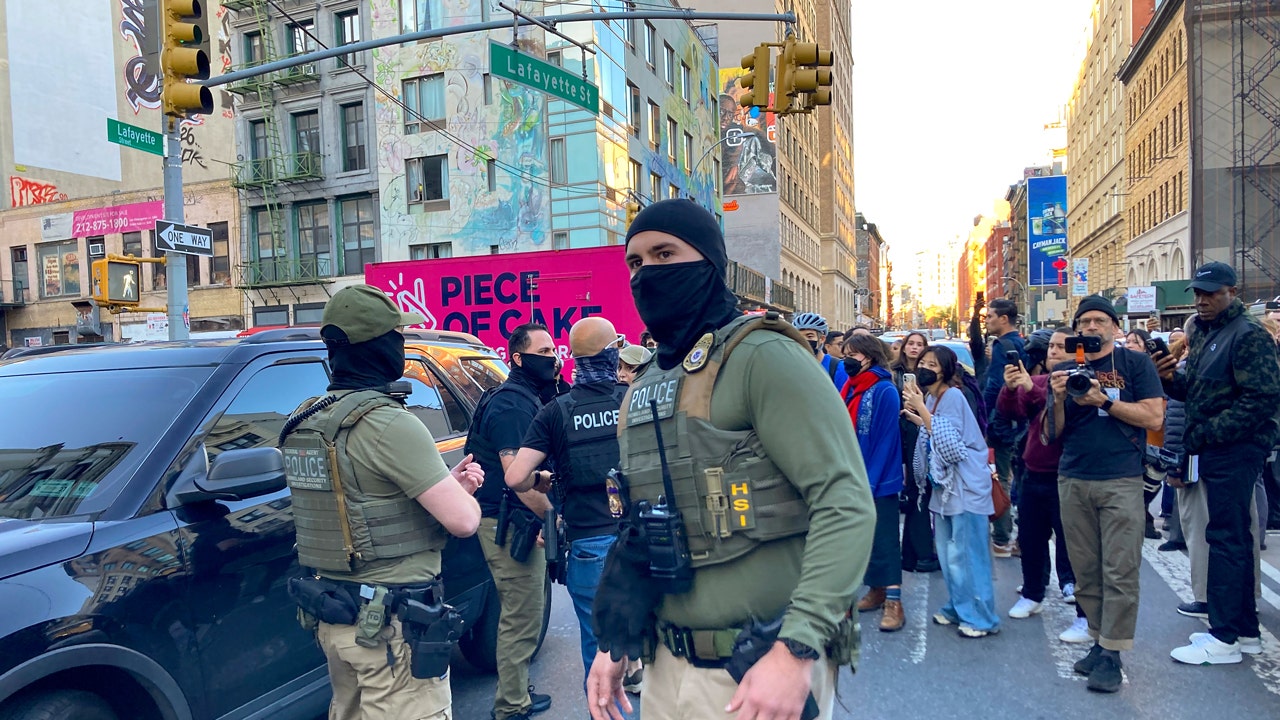Hawaii
More families file claims against Navy for Hawaii water contamination
:quality(70)/cloudfront-us-east-1.images.arcpublishing.com/archetype/D7DH6LC5PVFUPO7CBBDKRKHZJA.jpg)
Another 1,002 military family members and civilians filed administrative claims against the government Tuesday, seeking monetary damages related to fuel-contaminated drinking water in Hawaii.
Under the Federal Tort Claims Act, they allege the Navy released jet fuel and other contaminants from the Red Hill Bulk Fuel Facility into the families’ drinking water at least twice in 2021 — May 6 and Nov. 20 — and didn’t immediately disclose the incidents.
This brings the total to 1,499 administrative claims filed against the Navy, said Kristina Baehr, founder of Just Well Law, one of three law firms representing nearly 3,000 people affected by the water crisis. These SF-95 administrative claims are required before individuals can sue the government. If their claims are denied, they will join the pending federal court lawsuit in Honolulu. To date, the government hasn’t granted any of the administrative claims, Baehr said. The claims are generally seeking monetary damages related to medical issues and medical monitoring now and possibly for the rest of their lives.
“The Navy has accepted responsibility for contaminating our clients’ drinking water with jet fuel,” Baehr said. “But the Navy refuses to accept responsibility for any long-term harm. These claims offer the Navy an opportunity to make it right, just as they have promised.”
Navy officials in Hawaii didn’t comment before publication, but in the past officials have declined to comment on these cases, citing pending litigation.
More clients are contacting the attorneys every day, Baehr said. The statute of limitations for filing the administrative claims expires in November, and the attorneys expect to continue taking clients until Aug. 15, to allow enough time to meet the deadline. “I want to be sure we get what we need from people to file their claims,” she said.
There are currently 296 plaintiffs in the federal case, she said. Baehr’s firm, Just Well Law, the Hosoda Law Group and Motley Rice LLC are representing the people alleging they were affected by the tainted water.
All told, more than 93,000 individuals were affected, from 9,715 households in 19 different communities on the Navy water system of Joint Base Pearl Harbor-Hickam. They include residents of two Army communities and Air Force communities in the Hickam side. Some Hawaiian civilians were also affected, living in homes supplied by Navy water.
On Nov. 28, 2021, military families reported smelling fuel odors and seeing an oily film in their tap water. But some had reported mysterious abdominal pain, vomiting, memory loss, skin rashes, eye irritation, and teeth and gum issues even before the signs of fuel appeared. At first, Navy officials told residents it was okay to drink the water.
“The Navy knew that there was fuel in the water and yet reassured residents for days that ‘there was no indication that the water was not safe to drink,’” Baehr said.
RELATED
She said 67% of her firm’s clients are still experiencing health problems after the 2021 contaminations.
“The majority of my clients are still sick more than 18 months later,” she said. “And yet this was entirely preventable — if only the Navy had told them to stop drinking the water that the Navy knew was contaminated.”
Two-thirds of their clients have experienced neurological symptoms, and two-thirds have had skin problems; 56% have had reported gastrointestinal problems; and 41% respiratory problems, Baehr said.
Nearly half of the firm’s clients have moved out of their contaminated houses. Of those who stayed, 83% couldn’t afford to leave. Of those who moved, 87% moved off the island, she said. In addition, 12% of their clients have lost wages related to the crisis.
In early December, 2021, military officials offered families the option to move to hotels at government expense, and thousands did so. Water, laundry services and shower facilities were provided to those who chose to stay in their houses.
After massive flushing operations and testing — overseen by a joint working group of experts from the Navy and Army, the Hawaii Department of Health, and the Environmental Protection Agency — the water in the last of 19 zones was declared safe to drink on March 18, 2022.
On March 7, 2022, Secretary of Defense Lloyd Austin announced his decision to close the Red Hill Bulk Fuel Storage Facility, and to remove the fuel reserves from the 20 underground tanks, redistributing the fuel across the Indo-Pacific region. Officials have begun the process to defuel and shut down the tanks.
Karen has covered military families, quality of life and consumer issues for Military Times for more than 30 years, and is co-author of a chapter on media coverage of military families in the book “A Battle Plan for Supporting Military Families.” She previously worked for newspapers in Guam, Norfolk, Jacksonville, Fla., and Athens, Ga.

Hawaii
New report shows significant increase in keiki poverty in Hawaii
HONOLULU (HawaiiNewsNow) – A new national report is raising the alarm about a sharp rise in Hawaii children living in poverty.
The report by the Annie E. Casey Foundation shows child poverty has risen by one-third since the pandemic.
Nicole Woo, director of research and economic policy at the Hawaii Children’s Action Network, said the increase amounts to about 8,000 more children now living in poverty.
“One of the main reasons for this increase in child poverty is the loss of pandemic supports the federal stimulus and the child tax credit,” Woo said. “Without those kinds of financial supports, families are falling back into poverty in Hawaii and across the country.”
The report also found that without current programs like food assistance, rental aid and tax credits, the number of children in poverty would more than double from about 37,000 to 84,000, or one in four keiki statewide.
“Parents are struggling between paying for food, paying for rent and all those crucial things that keiki need to thrive,” Woo said.
That includes families like Mia Hall’s. The military spouse and family engagement specialist says her household falls under what Aloha United Way calls an ALICE family: asset limited, income constrained, yet employed.
She says the ongoing government shutdown has made life even harder.
“We do live paycheck to paycheck, which is true for a lot of families in Hawaii,” Hall said. “I have a second part-time job, but it’s still not enough to make up for the loss we’d experience if my husband didn’t get paid.”
Hall says the shutdown also disrupted care for her son, who has autism and Tourette’s syndrome.
“They just cut off all the therapies for my son, his occupational therapy, his physical therapy everything he needs,” she said.
The Hawaii Children’s Action Network encourages families in need to visit hawaiifoodhelp.com, which connects residents to programs such as SNAP (Supplemental Nutrition Assistance Program), WIC (Supplemental Nutrition Program for Women, Infants, and Children), and free school meals.
Copyright 2025 Hawaii News Now. All rights reserved.
Hawaii
Commission to discuss search for next Hawaii County police chief – Hawaii Tribune-Herald
With a mid-April deadline in sight, the Hawaii County Police Commission is ramping up efforts to select the island’s next police chief — and fast.
Hawaii
8 Reasons to Love Waimea on Hawaiʻi Island – Hawaii Magazine

While it shares its name with the canyon on Kauaʻi and the bay and valley on Oʻahu, the town of Waimea on Hawaiʻi Island stands apart in a delightful way.
Located toward the northern tip of the Big Island, Waimea is unlike any other town on the Big Island—and it’s one of my favorites to visit for that reason. I always look forward to the serene drive north from Kona, as barren lava fields give way to rolling green pastures. You know you’ve arrived in Waimea as you begin to see herds of cattle roaming, hinting at the area’s deep-rooted ranching history.
But beyond its paniolo (cowboy) culture, Waimea—also known as Kamuela to help distinguish it from other locales—is home to a welcoming community of independent businesses, award-winning farm-to-table restaurants, bustling farmers markets and more.
While visiting the Big Island, here are 10 reasons to stop in Waimea.
1. Fascinating Paniolo History
The 4th of July rodeo at Parker Ranch is the largest annual event in Waimea on Hawaiʻi Island.
Photo: Courtesy of Parker Ranch/Jacob Tavares
While paniolo culture is prevalent across the Islands, one of the best places to learn about Hawaiʻi’s cowboys is where the tradition started. After all, Waimea was home to cowboys before the American West.
In the 1830s, three Mexican vaqueros were brought to the Islands to teach Hawaiians how to rope, slaughter, breed cattle and work with horses. As a result, a class of dexterous Hawaiian cowboys ensued, long before the first big cattle drives of the Old West.
Named paniolo, a Hawaiian iteration of the word Español, local cowboys created their own style and practices distinct from the vaquero.
Today, you can take a self-guided tour of Hawaiʻi’s oldest and largest working ranch, Parker Ranch, which remains committed to preserving the heritage of the area.
Not far from Parker Ranch, Kahuā Ranch was established in 1928. The ranch welcomes visitors for horseback riding tours through electric green pastures with panoramic views of the coastline. You can also book a spot for an exciting paniolo barbecue dinner at the ranch.
2. Vibrant Farmers Markets

The Kamuela Farmers Market is one of the many farmers markets held every week in Waimea.
Photo: Hawaiʻi Tourism Authority (HTA)/Dana Edmunds
Browse the bounty of crops grown in the region, along with handcrafted goods, at several Waimea farmers markets. The Waimea Town Market, Kamuela Farmers Market and Kūhiō Farmers Market are on Saturdays, and the Pukalani Midweek Market on Wednesdays.
3. Hawaiian Style Café

The teri-beef burger-chicken cutlet plate lunch.
Photo: David Croxford
For local comfort food, Hawaiian Style Café is a must-try. Serving the community since 1993, the restaurant dishes out massive loco mocos and plate lunches, from kālua pork to kalbi ribs.
4. Farm-to-Table Restaurants

Since 1988, Merriman’s in Waimea has been a leading restaurant in farm-to-table practices.
Photo: Courtesy of Merriman’s Waimea
Waimea isn’t just known for its historic ranches; it’s also surrounded by a bounty of local farms. Along with local ranchers and fishermen, these farms and others across the island supply farm-to-table restaurants like Merriman’s Waimea and FORC with the freshest ingredients available. As a result, diners can savor thoughtfully prepared dishes that highlight the flavors and spirit of the Islands.
READ MORE: The 5 Best Farm-to-Table Restaurants on Hawaiʻi Island
5. Pâtisserie Nanako

A spread of Pâtisserie Nanako’s popular desserts: raspberry ladybug mousse, strawberry shortcake, lilikoʻi mango mousse, vanilla cream puff, and mac nut carrot cake.
Photo: Lauren Okinaka
Since opening in 2021, this family-owned shop has become beloved among locals and visitors for its Japanese-style pastries. (There’s usually a line out the door, but it moves quickly!) From pillowy strawberry shortcake and delicate cheesecake to a curry pan (buttery bread stuffed with savory curry), everything is made with care at Pâtisserie Nanako.
The raspberry ladybug is the bakery’s signature dessert. With a light chocolate cake base, the rich chocolate mousse is encased in a glossy raspberry glaze. And it’s delightful!
6. Cherry Blossoms Bloom in the Spring

The Waimea Cherry Blossom Heritage Festival is held every February to celebrate the cultural significance of the trees.
Photo: Island of Hawaiʻi Visitors Bureau (IHVB)/Kirk Lee Aeder
Cherry blossoms are among the world’s most iconic symbols of spring. While Japan is famous for its pink sakura, few know about the pockets of cherry blossoms hidden throughout the Hawaiian Islands—including in Waimea.
In the 1950s, cherry blossoms were introduced to the town and by the 1970s, dozens were planted along Waimea’s Church Row. Today, the Waimea Cherry Blossom Heritage Festival is held every February to celebrate the cultural significance of the trees here in the Islands and beyond. The festivities include a tea ceremony, art show, crafts, cooking demonstrations and more—all surrounded by the beauty of the sakura trees.
7. Kahilu Theatre
Built in 1980, Kahilu is a multidisciplinary art center that brings the community together through live performances. It hosts ʻukulele and slack-key guitar festivals, jazz performances, plays and more. Check out events and shows here.
8. Waimea Nature Park

Waimea Nature Park has the largest collection of variously colored ‘ōhi‘a lehua trees in the state.
Photo: Courtesy of Hawai‘i Tourism Authority (HTA)/Kirk Aeder
Spread across 20 acres, Waimea Nature Park—also known as Ulu Lāʻau—is a serene place for a stroll or a peaceful rest. The former pastureland was acquired by the Waimea Outdoor Circle in 1999, and volunteers soon planted native species and transformed it into a park. Today it boasts the largest collection of ʻōhiʻa lehua trees in the state.
Grace Maeda is the editor of HAWAIʻI Magazine.
-

 World2 days ago
World2 days agoIsrael continues deadly Gaza truce breaches as US seeks to strengthen deal
-

 News2 days ago
News2 days agoTrump news at a glance: president can send national guard to Portland, for now
-

 Technology2 days ago
Technology2 days agoAI girlfriend apps leak millions of private chats
-

 Business2 days ago
Business2 days agoUnionized baristas want Olympics to drop Starbucks as its ‘official coffee partner’
-

 Politics2 days ago
Politics2 days agoTrump admin on pace to shatter deportation record by end of first year: ‘Just the beginning’
-
Science2 days ago
Peanut allergies in children drop following advice to feed the allergen to babies, study finds
-

 News1 day ago
News1 day agoBooks about race and gender to be returned to school libraries on some military bases
-

 Politics20 hours ago
Politics20 hours agoHunter Biden breaks silence on pardon from dad Joe: ‘I realize how privileged I am’




















